How to top and train autoflowering cannabis plants
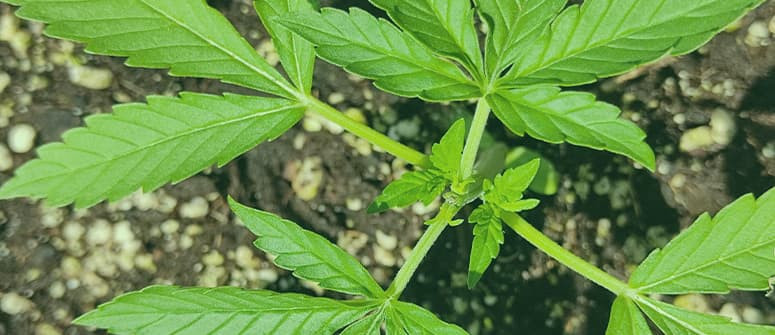
Autoflowering cannabis plants are great; they’re resilient, compact, and, most of all, fast to finish. But are they good candidates for training and topping techniques? In the quest for huge yields, should you take string or scissors to your autos? Find out everything you need to know.
Contents:
Growing weed is a fascinating endeavour, and there are plenty of ways to go about it. Some like to sow their seeds and let nature take care of the rest, while others like to get involved on a micro level and determine every aspect of their plant's life in the search for optimal results.
Training and topping techniques are commonly used among growers who want to achieve the biggest yields possible. These techniques work by maximising light exposure and/or increasing the amount of bud sites a plant produces.
But can you use these techniques on autoflowering plants? As autoflowering cannabis seeds contain ruderalis genetics, they function a little differently compared to photoperiod strains, and this makes them much less suitable for certain training and topping practices. Still, these techniques can work if performed appropriately. Let’s find out how.
Can you top or train autoflowering cannabis?
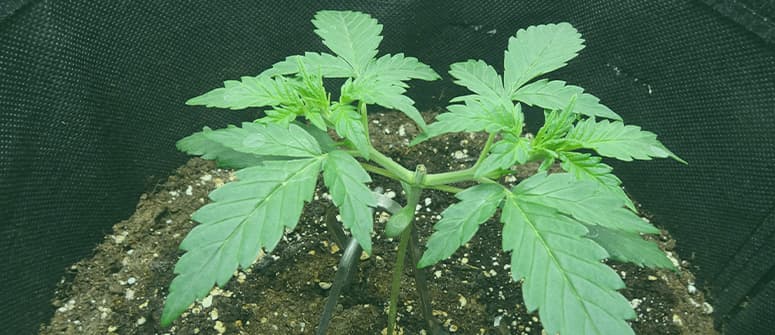
Yes, but you have to be exceptionally careful. Autoflowering strains have a very short, predetermined vegetative stage—usually 3–4 weeks—which means they have very little time to recover from any damage you inflict before entering the flowering stage. With photoperiod plants, they may spend 8 or even more weeks vegetating, and this can be extended if they need time to heal.
Once plants start to flower, energy is directed away from vegetative growth and toward bud production. So if you intend to top or train an autoflower, timing and tenderness are essential. Do it too late or too brutally, and you may have a stunted plant with poor production—exactly what you don’t want!
Should autoflowers be topped or trained?
This is a tough question, and as with many aspects of growing autoflowers, it’s up for debate. There are some auto growers who swear by both methods, and others who keep well away.
As mentioned, damaging autoflowering plants is risky, and may reduce, rather than increase, their growth and production. So if you’re new to the growing game, we’d say you’re best off avoiding topping and training for your first venture. Both require practice and knowledge, and you’ll get far better results if you focus your energy on feeding, watering, and lighting your auto plants correctly.
If you’re a little more experienced and want to push things a bit, then low-stress training techniques such as SOG or ScrOG offer the best results with the fewest risks. Executed carefully, these techniques don’t overstress plants, meaning your specimens won’t need much time to recover.
When it comes to topping and pruning, be very careful with autoflowers! It can be done, but it must happen at the right time, and it has to be minor compared to what you’d perform on photoperiod plants. If the plant isn’t fully recovered by the time it starts to flower, you’ll have done more harm than good.
Topping autoflowers vs training autoflowers
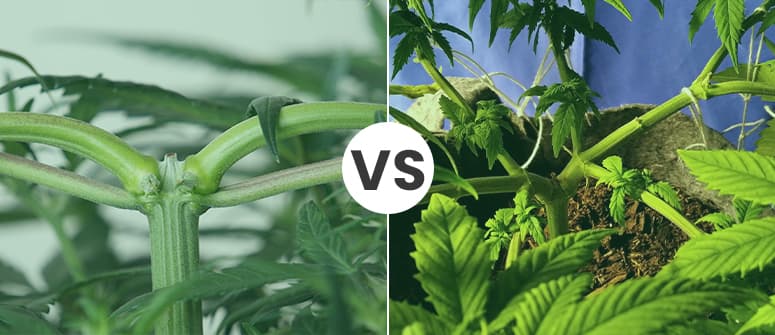
With that in mind, here’s a quick rundown of the pros and cons of topping autoflowering cannabis versus training.
Pros and cons of topping autoflowering cannabis
Pros:
- Results in multiple main colas
- Potentially higher yields
Cons:
- High likelihood of stressing the plant
- The plant may not have time to recover
- Overall quality and yield could be reduced
Pros and cons of training autoflowering cannabis
Pros:
- A much larger canopy can be created, thereby using light more efficiently
- Can lead to much larger yields
- More plants can fit into a smaller space, increasing overall yield
- Less stressful than topping
Cons:
- Still causes some stress, which may damage plants
- Must be executed well to be effective
What is the best time to top or train autoflowers?
Early! Like, really early. To give your plants time to fully recover before entering the flowering stage, any topping or training should be performed as soon as a plant has developed 3–4 nodes. It may seem harsh, but it’s in their best interest. Any later than this, and it’s likely to permanently damage the plant.
An important note: only attempt to top or train autoflowers that are otherwise totally healthy. Like these techniques, infestations, diseases, and issues with watering and feeding leave little opportunity for autoflowers to recover. If there is anything else wrong with your autoflowers, even a little discolouration, leave them be and allow them the time to recover, without adding to their stress. Ruderalis may be tough in many regards, but in this sense it needs extra care.
How to train autoflowering cannabis
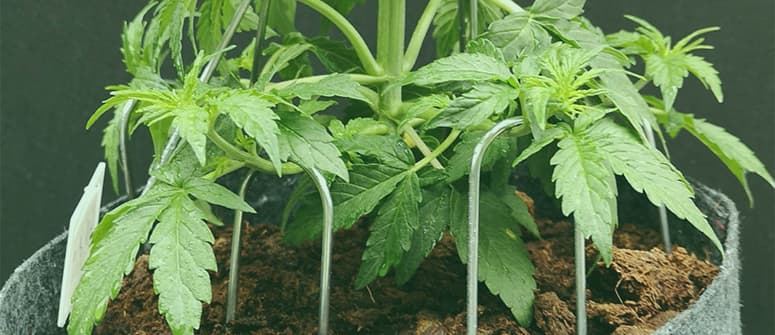
With all that out of the way, we’ll now examine how to train autoflowers. Though you have to be very careful, training techniques are actually very effective when it comes to optimising the performance of autoflowering cannabis. That being said, all of the techniques featured below are low-stress methods, as high-stress techniques are simply too much for most autoflowers.
LST
LST, or low-stress training, is by far the easiest training method to use on autoflowers. If performed effectively, it should hardly stress the plant at all, meaning it won’t actually need time to recover. This makes LST one of the best training options for relative novices.
LST aims to encourage the plant to grow outward, rather than upward, increasing the surface area of the canopy that is exposed to light.
It’s a simple process. Once the plant has 3–4 nodes, gently bend the stem over until the top is horizontal, and tie it down with string, wire, or pipe cleaners. Make sure you don’t break the stem! As the plant grows, adjust whatever is securing it, and make sure that it’s never so tight that it breaks through the tissue of the stem.
Over time, you’ll see that the plant grows very differently, and has many more leaves and bud sites directly exposed to the light. This should lead to significantly bigger harvests.
SOG and ScrOG
SOG, or sea of green, is about getting a nice, even canopy exposed to light. With autoflowers, SOG is less of a plant training technique and more of a spatial technique. It's just about optimising the light and area available to you.
The general idea behind SOG is to raise many small plants in one area, as opposed to fewer larger plants, to maximise yields. To perform this with autoflowers, simply place them about 30cm apart, and as the plants grow, they will form one thick, even canopy with equal exposure to the light source. Think of it as growing one massive plant!
ScrOG ,on the other hand, is a little more hands-on. ScrOG uses fewer plants, and involves installing a mesh screen around 30cm above the pots. Once the tops of the plants reach the screen, the branches and stems are carefully woven through and secured to the mesh, now growing outward, rather than upward. It’s sort of like a combination of LST and SOG. By gently tying down parts of the plant, you encourage the formation of a massive carpet of buds with equal exposure to the light source.
How to top autoflowers
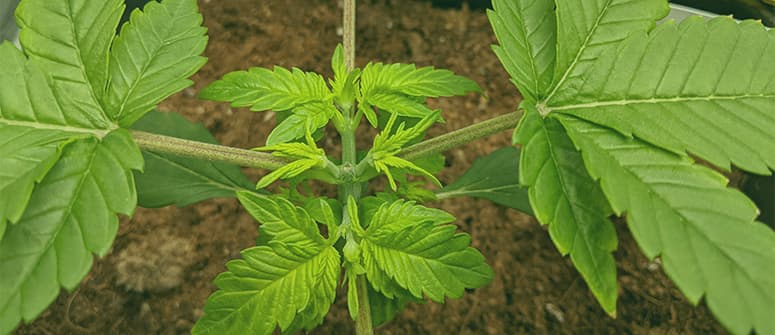
Topping, as a general growing technique, can be highly effective. It involves cutting off the top (hence the name) of the plant's main stem, where the main cola would grow once flowering begins. Note, though, that this must be done long before flowering starts!
When recovering from being topped, cannabis plants regrow not one, but two new shoots, leading to two main cola sites, and twice the amount of bud! With photoperiod plants, it’s a very rewarding technique, and can be practised more than once over the growing cycle.
With autoflowers, though, it’s a different story. Topping is much more stressful than just bending; the plant has to regrow one of its main parts. Therefore, only top if you have plants to spare and know what you’re doing—there’s a good chance it might not work as you intend.
If you do choose to top an autoflowering cannabis plant, do so very early so it has ample time to recover.
When should you avoid topping or training autoflowering plants?
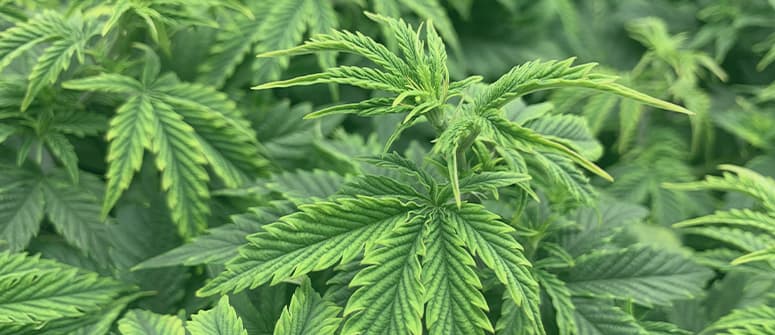
As mentioned, topping and training should only be performed on plants that are totally healthy. If your autos exhibit any of the following symptoms, don’t do anything to them!
- Unusually slow growth
- Discolouration of the leaves
- Signs of over or under-watering
- Signs of over or under-feeding
- High vulnerability to pests
- Signs of fungal or bacterial infections
- Any other signs that they’re anything other than perfectly healthy!
Really, autoflowers don’t have a lot of time to recover, so if they’ve got anything else wrong with them, do not stress them!
Topping or training autoflowers to improve yields
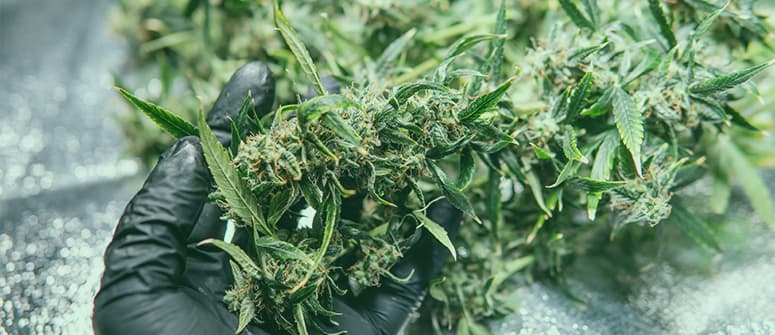
All weed growers want bigger yields. Ultimately, hauling in a huge bounty of bud is why most of us do it. With photoperiod cannabis plants, there is no doubt that training techniques, both low and high-stress, are effective and can fairly easily increase overall harvest weight.
But as you’ve probably noticed, it’s a slightly different picture when it comes to autoflowers. These plants have limited time, and so must spend their vegetative stage focused on growing as much as possible. All but the most low-stress of techniques could damage plants to a degree that prevents them from recovering or flowering abundantly.
That’s not to say that certain techniques shouldn’t be used, nor that they won’t work. Only that, if you do opt to perform them, you must proceed carefully and not push your plants too much. They might react well to a little stress, but they’ll certainly underperform if subjected to a lot!




